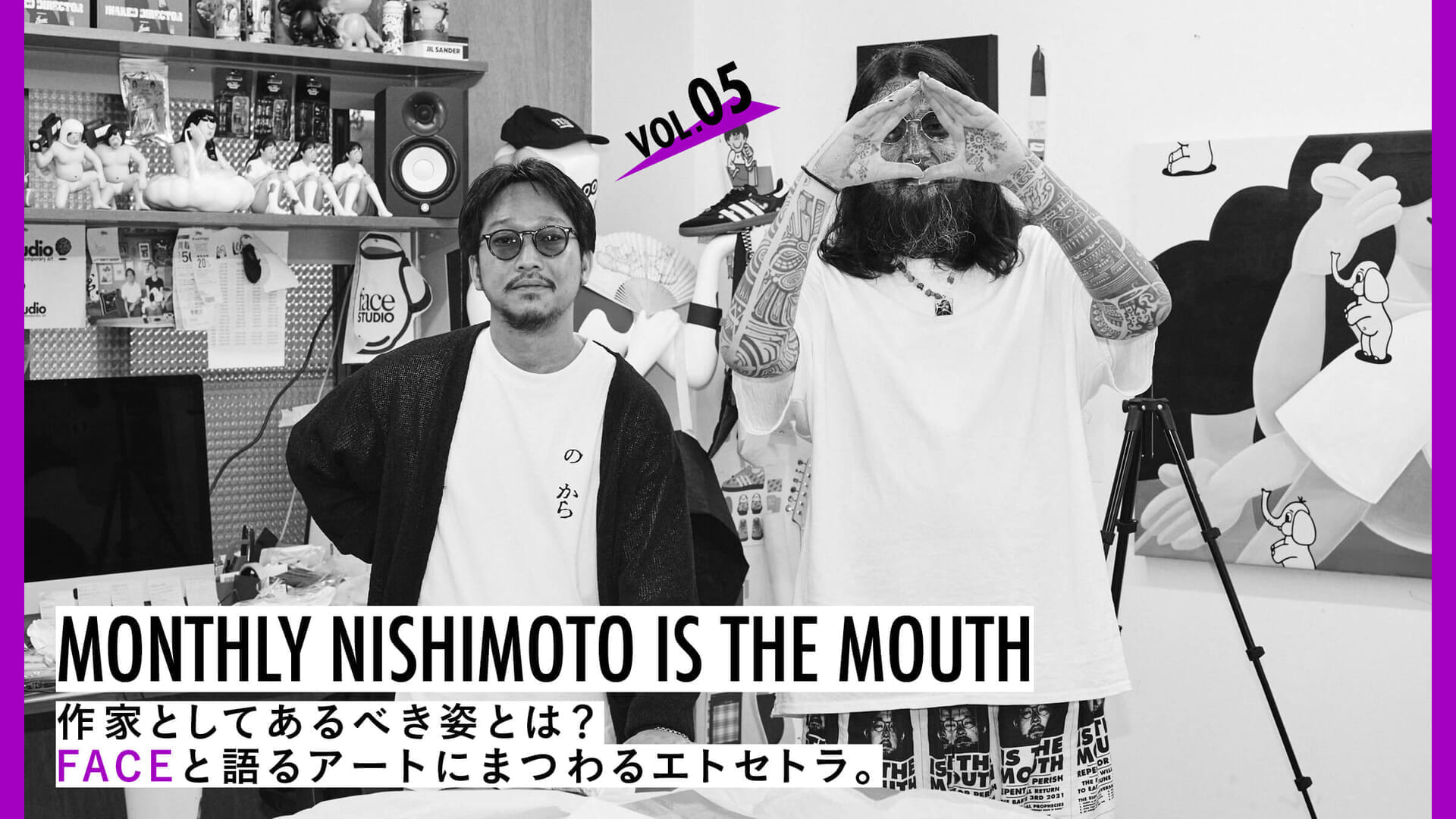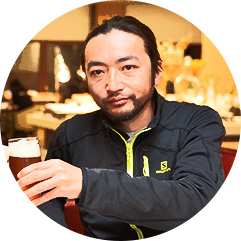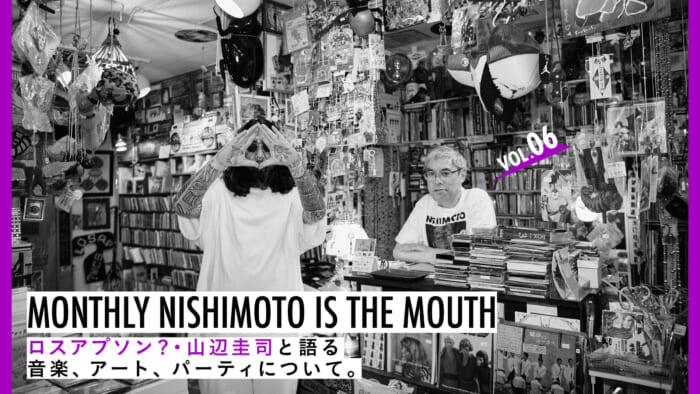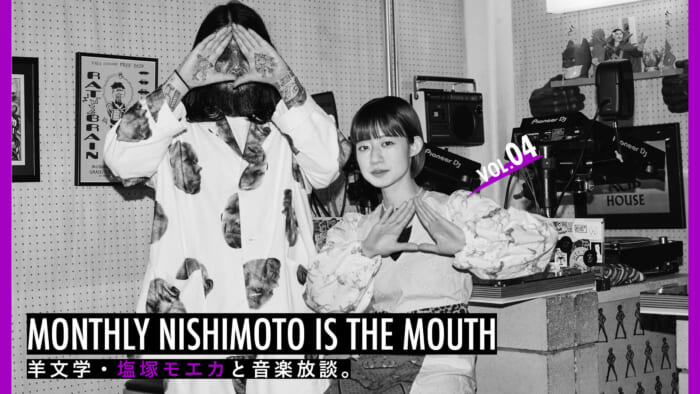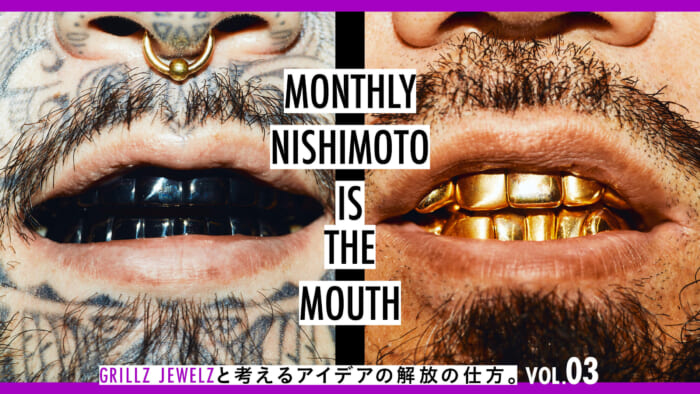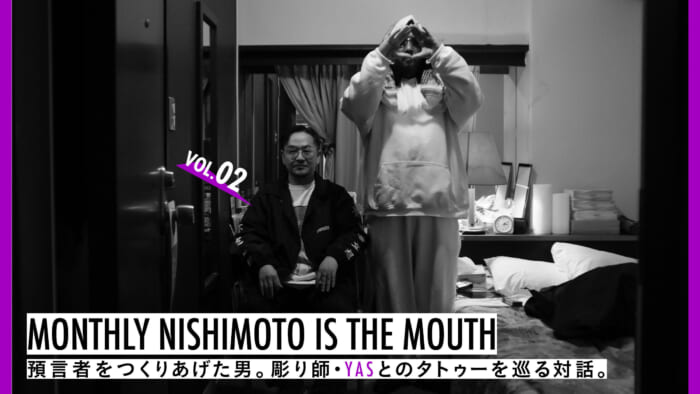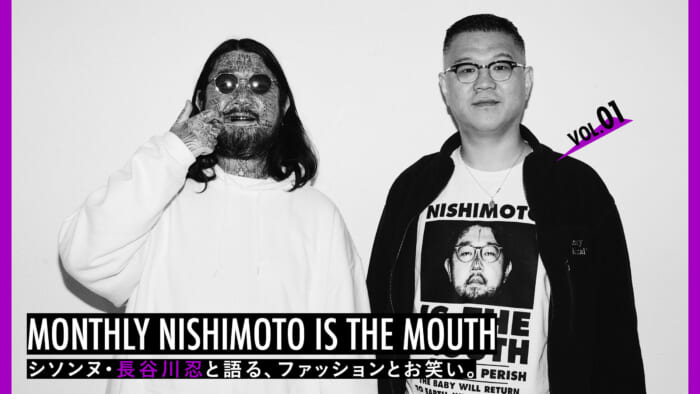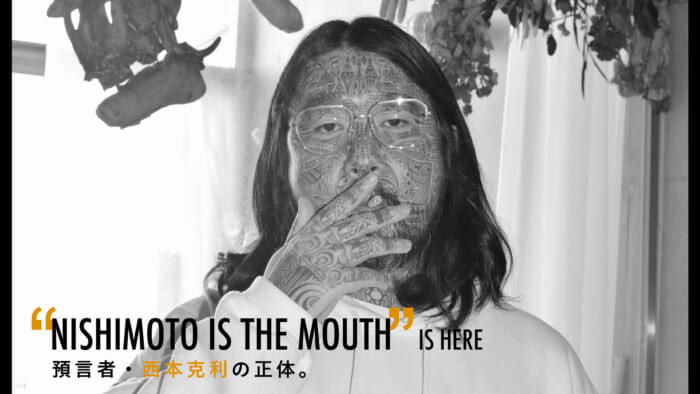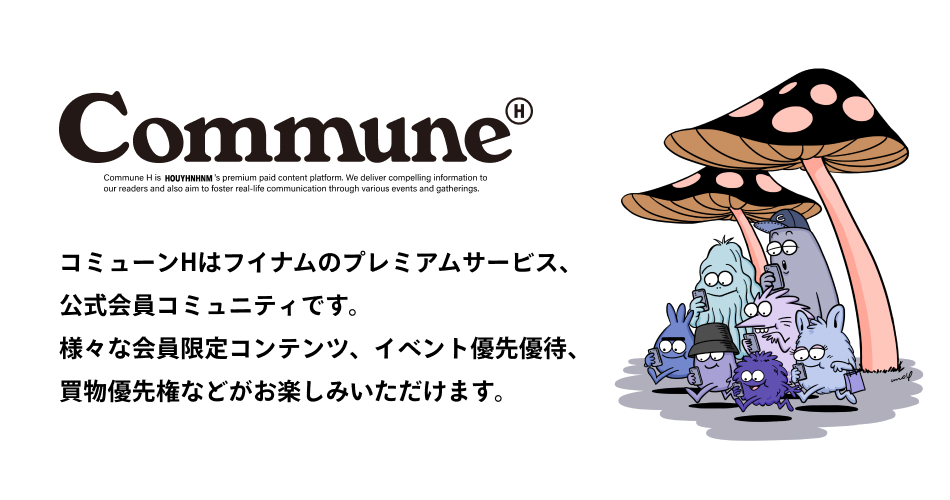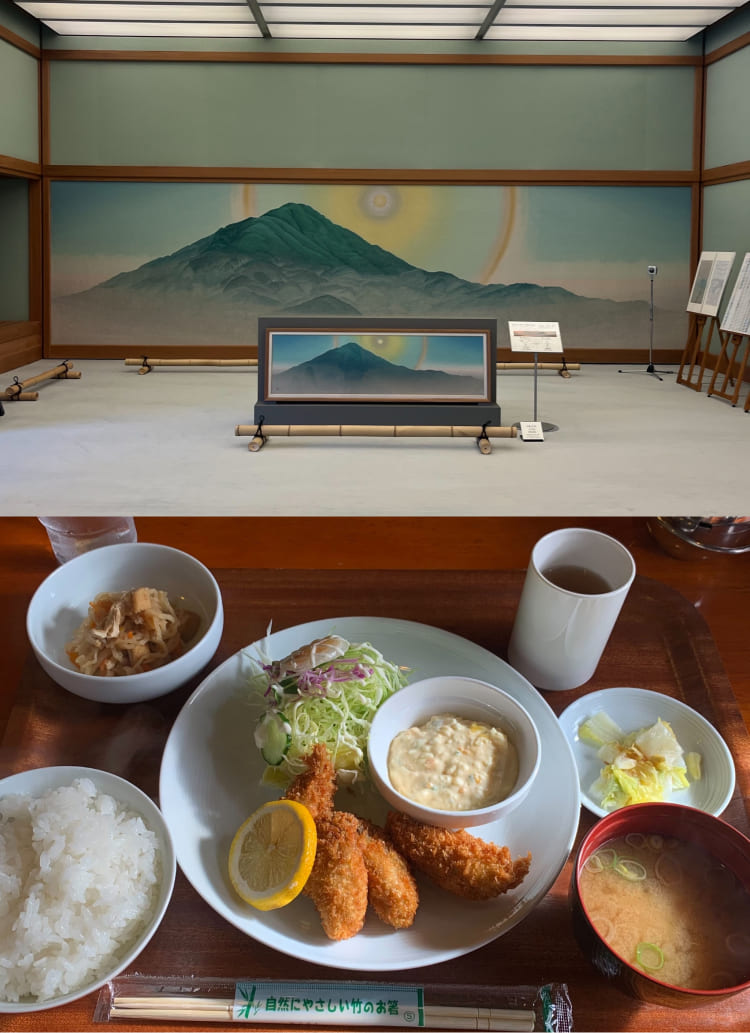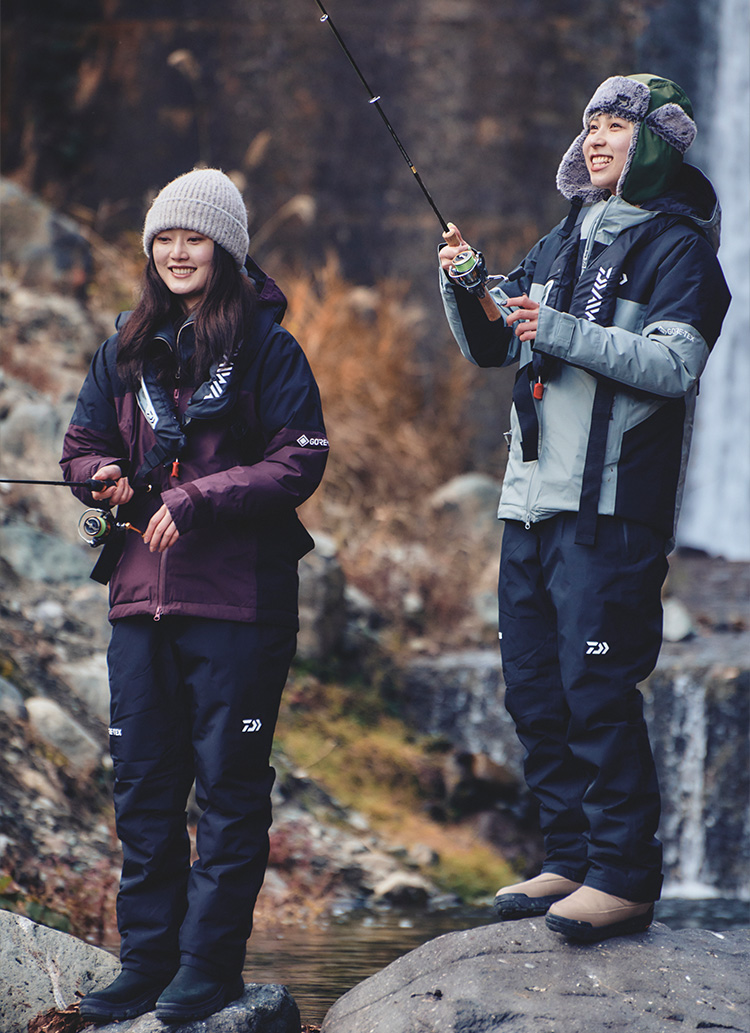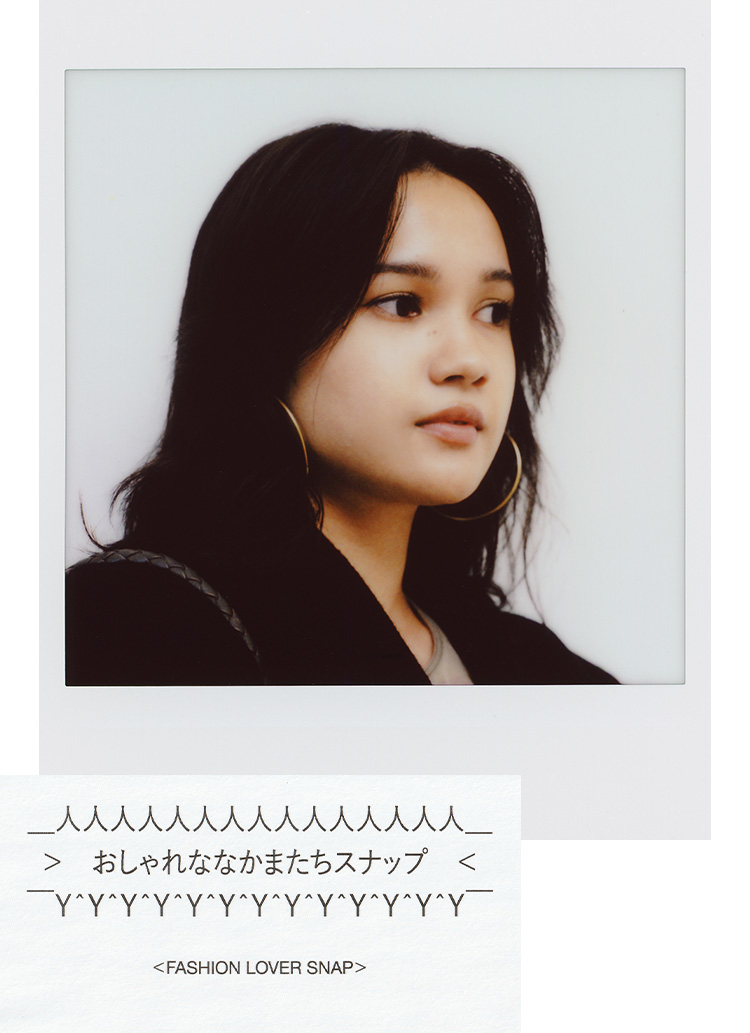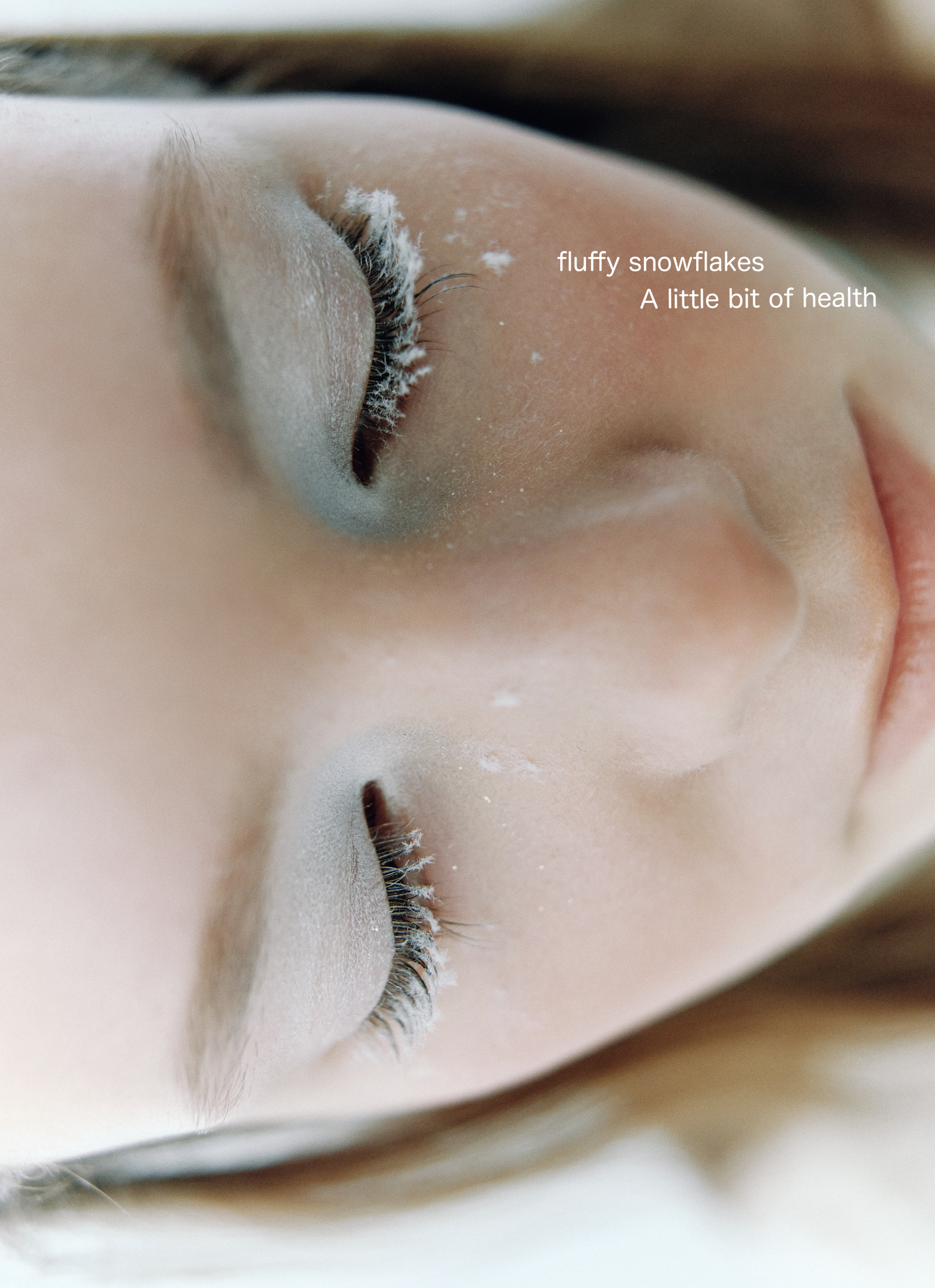The theme is "Peaceful Japanese.
How did you come up with these characters, or rather, your style?
FACE:I really like James Jarvis. I used to draw imitations of him when I was in high school.
Nishimoto:That's right, his paintings were featured in "relax" and other magazines.
FACE:That's right. When I was in high school, I took a purikura with a girlfriend I was dating, and she asked me to "draw" with the doodle function, so I did (laughs).
Nishimoto:Are there any of those purikura left (laughs)?
FACE:It is indeed no more (laughs).
While you were drawing it, were you searching for your own identity?
FACE:That's right. No matter how many times I drew it, it still ended up looking like James Jarvis. That's why it didn't feel right to me. I had a feeling that one day I wanted to draw something iconic that would be uniquely me, so I kept on drawing to find something that would fit me.

Did you make a turning point from there?
FACE:There is a producer of BiSH named Watanabe (Junnosuke), with whom I used to work part-time. Before he started BiSH, I had the opportunity to paint the jacket for the debut album of a girl named Pooh Rui, who was a pioneer of BiSH.
At that time, I drew a face that looked like my character. He was smiling, but his head was cut off.
Nishimoto:Wow! That's interesting.
FACE:I wanted to add some irony. I am still conscious of that.
Nishimoto:FACE's paintings have that kind of feeling, don't they?
Do you have a message or a theme?
FACE:I always draw on the theme of "peaceful Japanese. I feel that without this theme, my work would be frivolous in its expression.
Nishimoto:Is there a reason why that theme came about?
FACE:My brother was in the U.S. at the time of 9/11. So I felt as if I was not a stranger to the incident. A few years after the incident, I went to New York and visited Ground Zero. I went to New York a few years after the incident and visited Ground Zero, where "PEACE" was written and a collapsed pillar was erected in the shape of a cross. When I saw that, I was really affected by it, or rather, I felt something very intense.

I think there is something that you can never feel if you just stay in Japan and watch the news.
FACE:That's right. I wondered how many Japanese people do not know the reality of the situation, or how many of them see the situation as their own. Although I myself am still a peace-loving person in some ways, the idea of "peace-loving Japanese" has always been in my mind, including as a warning to myself.
Nishimoto:I like that kind of irony, so I would like to incorporate it into my clothing. I would like to incorporate it into my clothes as an underlying theme.
When I go abroad, I often feel how peaceful Japan is, for better or worse.
Nishimoto:That's right. People are not afraid to take things that they have forgotten. I think some people are looking at the war between Ukraine and Russia as if it were a fire on the other side of the river.
FACE:Once upon a time, there were student movements and they were very powerful. I wonder if we are living through such an era now. I don't think there is anything good or bad about it.
Nishimoto:It is scary to see images from that time, isn't it? Come to think of it, there is a movie called "Robinson's Garden" that is very interesting and I recommend it. It features Akemi Edo, the vocalist of Jagatara, and Sakevi Yokoyama of G.I.S.M.
FACE:Sounds interesting.
Nishimoto:It is directed by Masashi Yamamoto, who has made a number of cult films.
FACE:I have never been very interested in history, but now I am finally becoming interested in it.
Nishimoto:We can learn from the past, but it is only for the future. I don't think it is good to be too nostalgic. I don't want to end up thinking that those days were good or those days were great. As I mentioned earlier, we can search for anything on the Internet and connect with anyone, so my challenge now is to make good use of such tools. There are fewer opportunities to get information with one's own feet or to dig for clothes or records like there used to be in the past, and because of that, I am not as thrilled as I used to be.
FACE:Looking at your Instagram, I see that you dig art quite a bit. I dropped out of art college, but there are many people in the world who express themselves in a good way. I wonder how it is to hook up only popular people without looking at such people. However, Nishimoto-san is trying to put such people in the spotlight.

Nishimoto:There is no need for colored glasses, such as who is supporting you or who is following you. The cool ones are cool regardless of such things. When I look around, I see many great artists. I would like to do something with them.
FACE:It is very gratifying for young artists to have someone who sees their work and hooks up with them in this way. When I was a student, I was often told, "What doesn't fall in with the masses is different. So just to have someone say to me, "Your expression is not wrong," saves me.
Nishimoto:When I went to various exhibitions of young artists and talked to them, I found that there were some who created works without eating for two days. They also like clothes, but they don't have the money to buy them. I tell them to give their clothes away and use the money they save to eat whatever they want and have a good time. That's all I can do.

FACE:I think that kind of thing is really important. It costs about 2,000 to 3,000 yen to buy a single tube of acrylic paint. If you wanted to collect 10 colors, it would cost quite a bit of money. Artists also spend a lot of money.
Nishimoto:I was amazed that he was willing to do what he wanted to do without eating for two days. I could never do such a thing now. I have learned a lot. I went out to eat with them, and I told them they could eat as much as they wanted (laughs). I feel like I will be rewarded if they become big in the future. The power of young people is very strong, and I think it is my role now to lead them in the right direction.
I think that makes a lot of sense.
Nishimoto:I hope so. There are many interesting artists in Japan, so I put them on my Instagram to let everyone know about them.
I often hear that the number of people who spend money on art has increased due to the Corona Disaster, and among them, the number of people who purchase artworks for investment purposes seems to be increasing. Of course, there are aspects of the market that are made possible by such people, but I don't think they have the same purpose of supporting artists as so-called patrons do.
FACE:There is a sense that art is being consumed. The same is true of fashion, especially in Japan, where the cycle of trends is extremely fast.
Nishimoto:There is a sense that business takes precedence over culture.
FACE:Recently, I have also been contacted by young artists who ask me, "How can I get my artwork to sell? How do I put a price on it? I was drawing to decorate my own room when I was their age. But when I was their age, I was painting for my own room, so I had no intention of selling my works.
Nishimoto:Yes, that's right.
FACE:I tell them that they should not think about selling their work from the beginning because they should just continue to create works that they are satisfied with. As an artist, it is of course important to want to sell your work, but if you are beholden to the current market, I think you will gradually lose the pleasure of creating artwork.
Nishimoto:Skills and experience cannot be bought with money. Even if your work does not sell, I think it is more important to start out by doing what you want to do and pushing yourself to the limit.
FACE:That is the basic premise.


Nishimoto:Also, recently, I think it is important to see artworks in person. I know it is a matter of course, but I think it is not good to just see the work on Instagram and think you have been to an exhibition. I don't think it's a good idea to think you've been to an exhibition just because you saw it on Instagram or something.
FACE:That's right. We don't know the size or texture of the work.
I think that if you look at it on Instagram, nothing will be left behind in the end.
Nishimoto:That's right. That's why I wanted to buy music on vinyl. You put it on the turntable, drop the needle, and for the first time the sound plays. I like that kind of physical experience. It stays with you for a long time. I used to rent CDs from rental shops and import them into my computer, but I never listened to them. I just kind of gave it a pass and ignored it. I think there is a risk involved in paying for something yourself, but I think there is a return as well.


